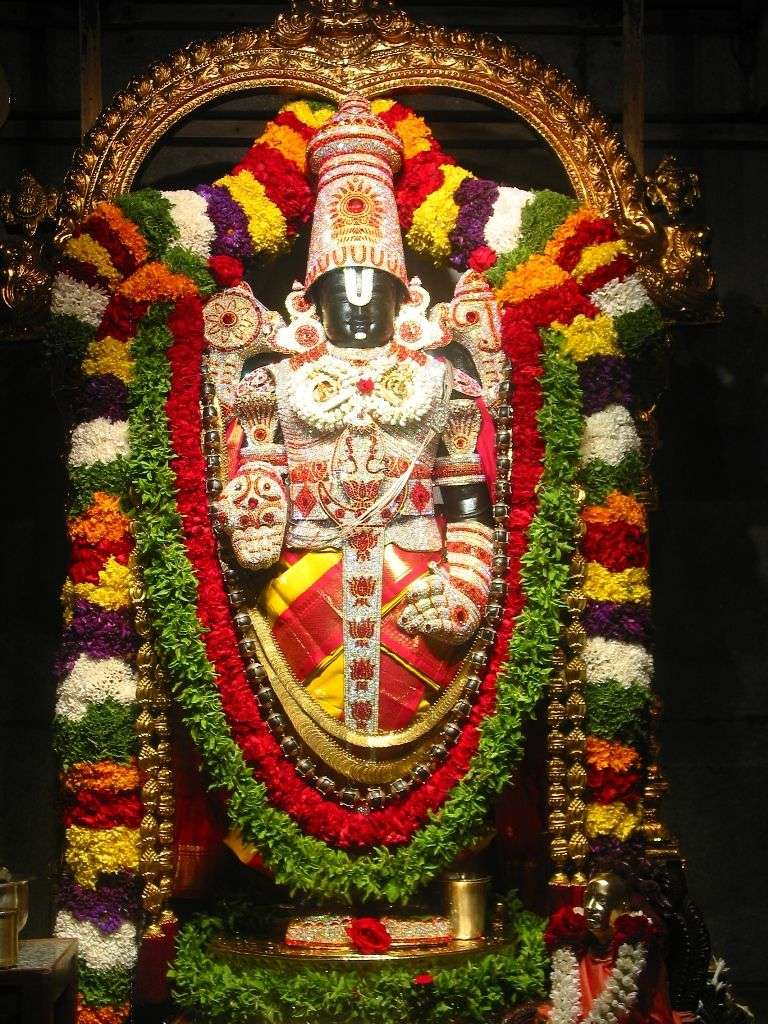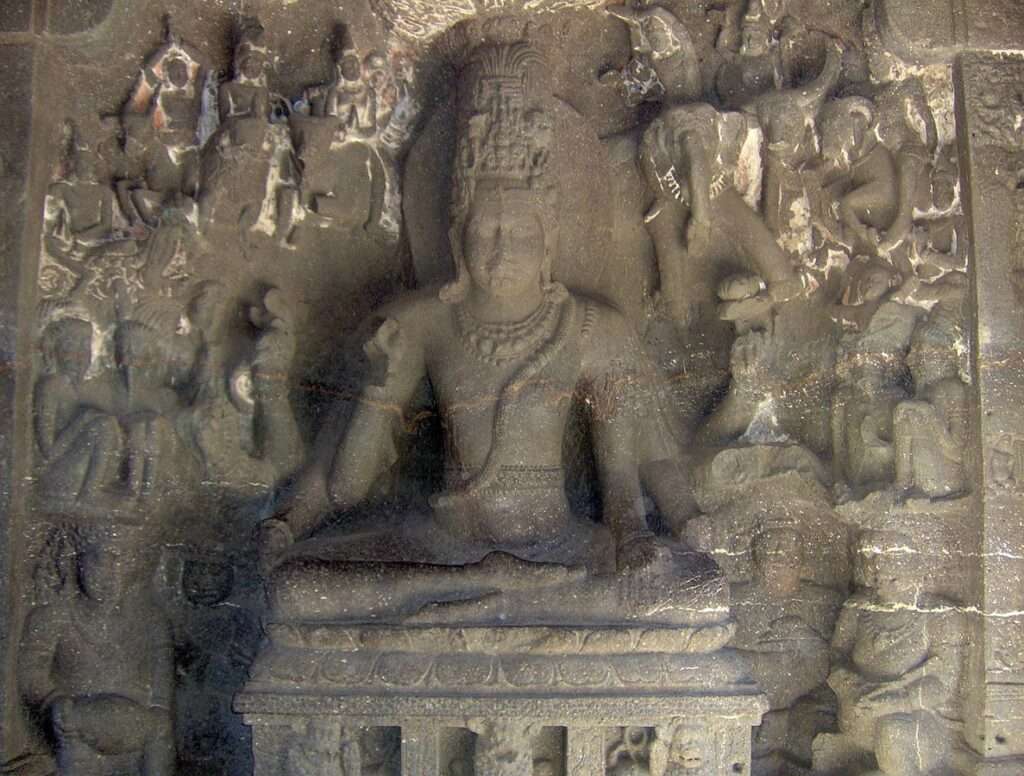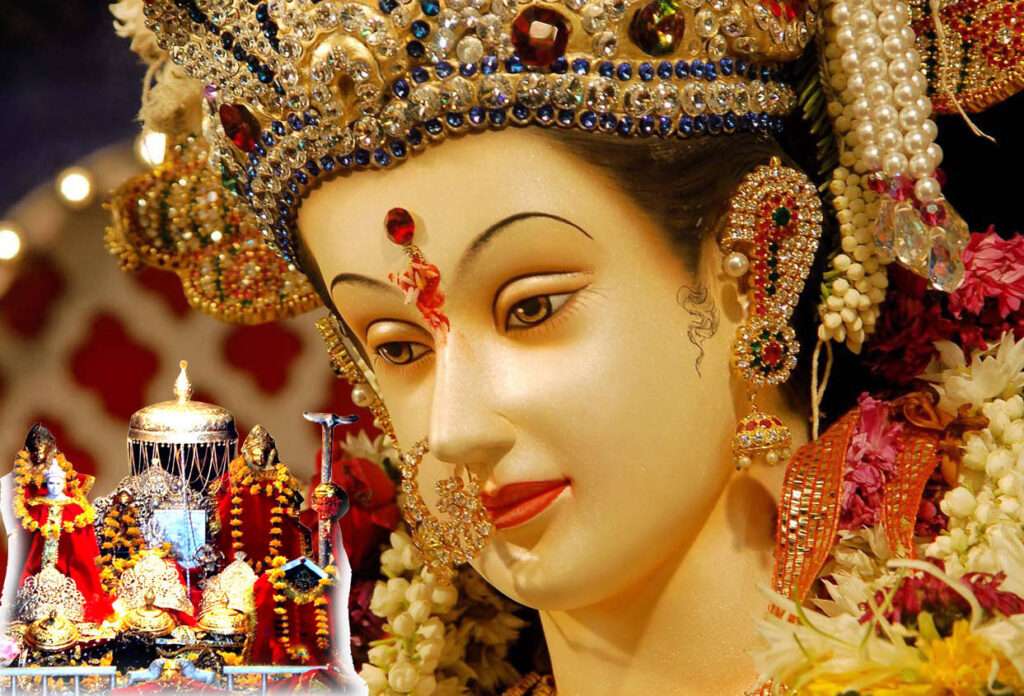Introduction
Tirupati Balaji is one of the most sacred and popular Hindu temples in India. It is dedicated to Lord Venkateshwara, an incarnation of Lord Vishnu, who is believed to have appeared here to save mankind from the troubles of Kaliyuga. The temple is located in the hill town of Tirumala, near Tirupati, in Andhra Pradesh. Millions of devotees visit this temple every year to seek the blessings of the Lord and fulfill their vows.
In this blog post, we will explore the history, legend, architecture and benefits of visiting Tirupati Balaji temple. We will also look at some of the nearby attractions and frequently asked questions that you may have before planning your trip to this divine destination.
Table of Contents
History of Tirupati Balaji Temple
The history of Tirupati Balaji temple is shrouded in mystery and legend. According to one version, the temple was built by King Thondaiman, a Pallava ruler, in the 8th century CE. He was a devotee of Lord Vishnu and had a vision of the Lord in his dreams. He then constructed a temple on the spot where he saw the Lord’s feet.
Another version claims that the temple was built by King Krishnadevaraya of Vijayanagara Empire in the 15th century CE. He was also a devotee of Lord Vishnu and had visited the temple several times. He made many donations and enhancements to the temple, such as adding gold and jewels to the idol, building a gopuram (tower) and a prakaram (enclosure).
However, some historians believe that the temple is much older than these accounts and dates back to the pre-Vedic period. They cite references to Tirupati Balaji temple in ancient scriptures such as Rig Veda, Puranas, Agamas and Divya Prabandham. They also point out that the idol of Lord Venkateshwara is self-manifested (swayambhu) and not carved by human hands.
How to Reach Tirupati Balaji temple
Here are the ways to reach Tirupati Balaji from major cities of India
By Air
- The nearest airport to Tirupati is Renigunta Airport, which is around 15 km away. There are direct flights from major cities like Chennai, Hyderabad, Bangalore, and Delhi to Renigunta Airport.
- You can also fly to Tirupati Airport, which is around 8 km away from the city. However, there are only a few direct flights to Tirupati Airport.
By Train
- Tirupati has a well-connected railway network. There are direct trains from major cities like Chennai, Hyderabad, Bangalore, and Delhi to Tirupati Railway Station.
- The nearest major railway station to Tirumala is Tiruchanur Railway Station, which is around 7 km away. There are direct trains from major cities like Chennai, Hyderabad, and Bangalore to Tiruchanur Railway Station.
By Road
- Tirupati is well-connected by road. There are buses from major cities like Chennai, Hyderabad, Bangalore, and Delhi to Tirupati.
- You can also drive to Tirupati from most major cities in India. The road journey is usually smooth and takes around 5-6 hours from Chennai, 4-5 hours from Hyderabad, and 6-7 hours from Bangalore.
By Foot
- If you are a devout Hindu, you can also walk to Tirumala from Tirupati. The walk is around 8 km long and takes around 3-4 hours.

Pujas at tirupati balaji temple
Sure, here are some of the pujas that are performed at Tirupati Balaji Temple:
- Suprabhata Seva: This is the first puja of the day and is performed at 3:30 am. It is a very sacred puja and is believed to bring good luck and prosperity.
[Image of Suprabhata Seva Tirupati Balaji Temple] - Abhishekam: This is a ritual of bathing the deity with milk, water, and other holy fluids. It is performed several times a day and is believed to cleanse the deity and bring blessings to the devotees.
- Ashtadala Pada Padmaradhana: This is a special puja that is performed on Tuesdays. In this puja, the deity’s feet are bathed with milk, water, and other holy fluids. 108 lotus flowers are then offered to the deity’s feet.
- Vishesha Puja: This is a special puja that is performed on Mondays. In this puja, the deity is offered 14 kalashas (pots) filled with milk, water, and other holy fluids.
[Image of Vishesha Puja Tirupati Balaji Temple] - Rathotsavam: This is a grand festival that is celebrated every year in April or May. In this festival, the deity is taken out in a procession on a golden chariot.
- Vaibhavotsavam: This is another grand festival that is celebrated every year in September or October. In this festival, the deity is taken out in a procession on a silver chariot.
These are just a few of the many pujas that are performed at Tirupati Balaji Temple. Each puja has its own significance and is believed to bring blessings to the devotees.
Legend of Tirupati Balaji Temple
There are many legends associated with Tirupati Balaji temple, but the most famous one is about how Lord Vishnu came to reside here as Lord Venkateshwara. The legend goes like this:
Once, Lord Vishnu was resting on his serpent couch, Adisesha, in his abode, Vaikuntha. His consort, Goddess Lakshmi, was massaging his feet. Suddenly, a sage named Bhrigu arrived there and wanted to test who among the three supreme gods – Brahma, Vishnu and Shiva – was the most supreme. He first went to Brahma’s abode, but Brahma did not pay attention to him. He then went to Shiva’s abode, but Shiva was busy with his consort, Parvati. He finally came to Vishnu’s abode and saw him sleeping.
Bhrigu was angry that none of the gods respected him. He decided to kick Vishnu on his chest, where Lakshmi resides. As soon as he did that, Vishnu woke up and apologized to Bhrigu for not noticing him. He also pressed Bhrigu’s foot gently to relieve his pain.
Bhrigu was astonished by Vishnu’s humility and declared him as the most supreme god. However, Lakshmi was offended by Bhrigu’s act and felt insulted by Vishnu’s apology. She left Vaikuntha in a huff and came down to earth.
Vishnu realized his mistake and followed Lakshmi to earth. He searched for her everywhere but could not find her. He finally reached a hill called Venkatachala (also known as Seshachala or Ananda Giri), where he found a lotus pond. He decided to stay there and meditate until he found Lakshmi.
Meanwhile, Lakshmi had taken the form of a cowherdess and was living with a tribe called Chola on the same hill. She used to graze her cows on the hill everyday. One day, she saw Vishnu meditating under a tamarind tree and recognized him. She wanted to reunite with him but did not want to disturb his meditation.
She decided to approach him through one of her cows. She entered into the body of a cow and went near Vishnu. She poured her milk She poured her milk on his head, hoping that he would notice her. However, Vishnu did not open his eyes and continued his meditation.
The cowherd who owned the cow saw this and was angry. He thought that the cow was wasting its milk on a stranger. He took his axe and tried to hit Vishnu on his head. But as soon as he swung his axe, Vishnu opened his eyes and stopped it with his hand.
The cowherd was shocked and fell at Vishnu’s feet. He realized that he was not an ordinary person but a god. He begged for his forgiveness and ran away.
Vishnu was surprised by this incident and wondered who had poured the milk on him. He looked around and saw Lakshmi in the form of a cowherdess. He recognized her and called out to her. Lakshmi was overjoyed and ran towards him. They embraced each other and decided to stay on the hill as husband and wife.
They took the forms of Lord Venkateshwara and Goddess Padmavati and lived happily on the hill. They also blessed the cowherd tribe and granted them prosperity.
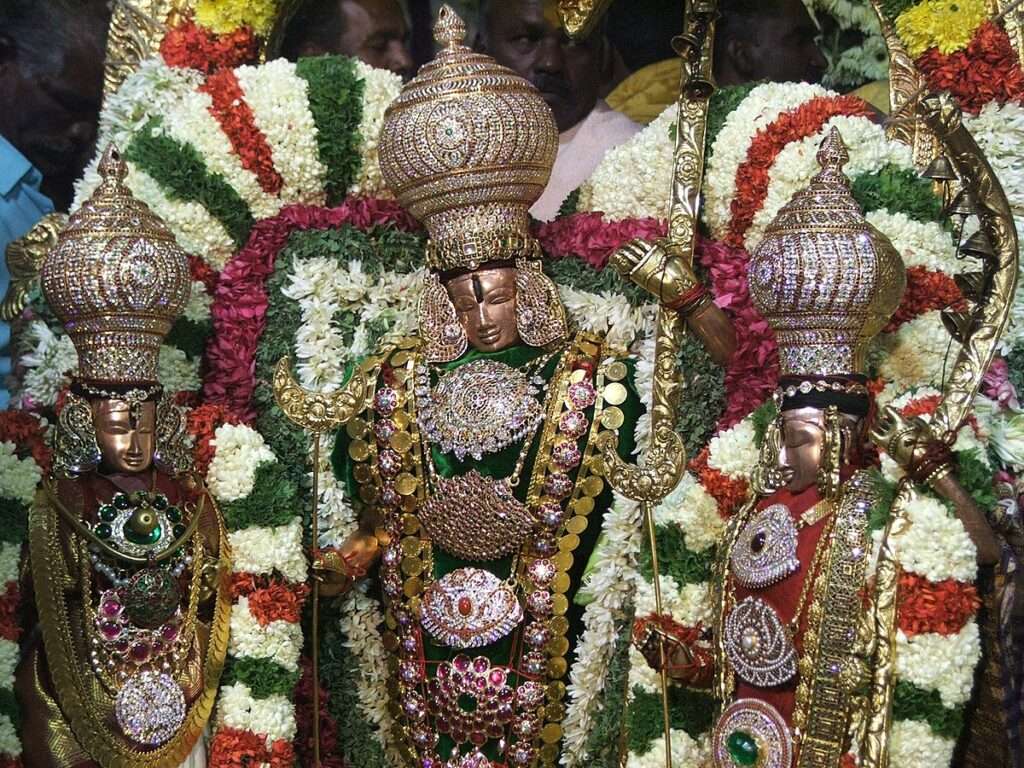
Architecture of Tirupati Balaji Temple
Tirupati Balaji temple is a marvel of architecture and art. It covers an area of about 2.2 acres and has several structures, such as gopurams, prakarams, mandapams, shrines, tanks and gardens.
The main entrance to the temple is through a seven-storeyed gopuram called Ananda Nilayam, which means “abode of bliss”. It is adorned with intricate carvings of gods, goddesses, animals, birds and flowers. It also has a golden kalasha (pot) on its top, which is said to contain the hair of Lord Venkateshwara.
The main shrine of the temple is called Garbha Griha, which means “womb chamber”. It houses the idol of Lord Venkateshwara, which is about 8 feet tall and made of black stone. The idol is decorated with gold ornaments, jewels and flowers. It also has a diamond crown on its head, which is called Vajra Kireetam. The idol is said to be self-manifested (swayambhu) and very powerful.
The idol faces east and has four hands. The upper right hand holds a discus (chakra), the upper left hand holds a conch (shankha), the lower right hand is in a boon-giving gesture (varada mudra) and the lower left hand rests on his thigh (katyavalambita mudra). The idol also has a tilak (mark) on its forehead, which is made of camphor and saffron.
The idol is worshipped with various rituals, such as abhishekam (bathing), alankaram (dressing), naivedyam (offering food), arati (waving lamps) and archana (reciting names). The idol is also adorned with different clothes and jewels according to the seasons and festivals.
The main shrine also has other deities, such as Goddess Lakshmi, Goddess Padmavati, Lord Rama, Lord Krishna, Lord Shiva, Lord Ganesha and Lord Hanuman. There are also several sub-shrines in the temple complex, such as Varaha Swamy temple, Bedi Anjaneya Swamy temple, Ramanuja temple, Tirumala Raya temple and Yoga Narasimha Swamy temple.
The temple also has several mandapams (halls), such as Bangaru Vakili (golden corridor), Ranganayaka Mandapam (auditorium), Tirumamani Mandapam (jewel hall), Aina Mahal (mirror hall) and Dhvajasthambha Mandapam (flagstaff hall). These mandapams are used for various purposes, such as processions, festivals, cultural programs and pilgrim services.
The temple also has several tanks (pushkarinis), such as Swami Pushkarini, Akasa Ganga, Papa Vinasanam, Kumaradhara and Pandava Teertham. These tanks are considered sacred and have medicinal properties. Pilgrims take a dip in these tanks before entering the temple.
The temple also has several gardens (vanams), such as Ananda Nilayam Vimanam Prakaram Garden, Tirumala Tirupati Devasthanams Garden and Sri Venkateshwara National Park. These gardens are filled with various plants, flowers, fruits and herbs. They also provide a serene environment for meditation and relaxation.
Benefits of Visiting Tirupati Balaji Temple
Visiting Tirupati Balaji temple is not only a religious duty but also a spiritual experience. There are many benefits of visiting this temple, such as:
- It fulfills the desires and wishes of the devotees. Lord Venkateshwara is known as the Lord of wealth and prosperity. He grants boons to those who worship him with faith and devotion. Many people visit this temple to seek his blessings for their personal and professional success.
- It removes the sins and troubles of the devotees. Lord Venkateshwara is also known as the Lord of mercy and compassion. He forgives the sins and mistakes of those who repent and surrender to him. Many people visit this temple to seek his protection from the evils and difficulties of life.
- It enhances the health and happiness of the devotees. Lord Venkateshwara is also known as the Lord of health and happiness. He bestows good health and happiness to those who serve him with love and gratitude. Many people visit this temple to seek his grace for their physical and mental well-being.
- It elevates the consciousness and wisdom of the devotees. Lord Venkateshwara is also known as the Lord of knowledge and enlightenment. He imparts knowledge and wisdom to those who seek him with curiosity and humility. Many people visit this temple to seek his guidance for their spiritual growth.
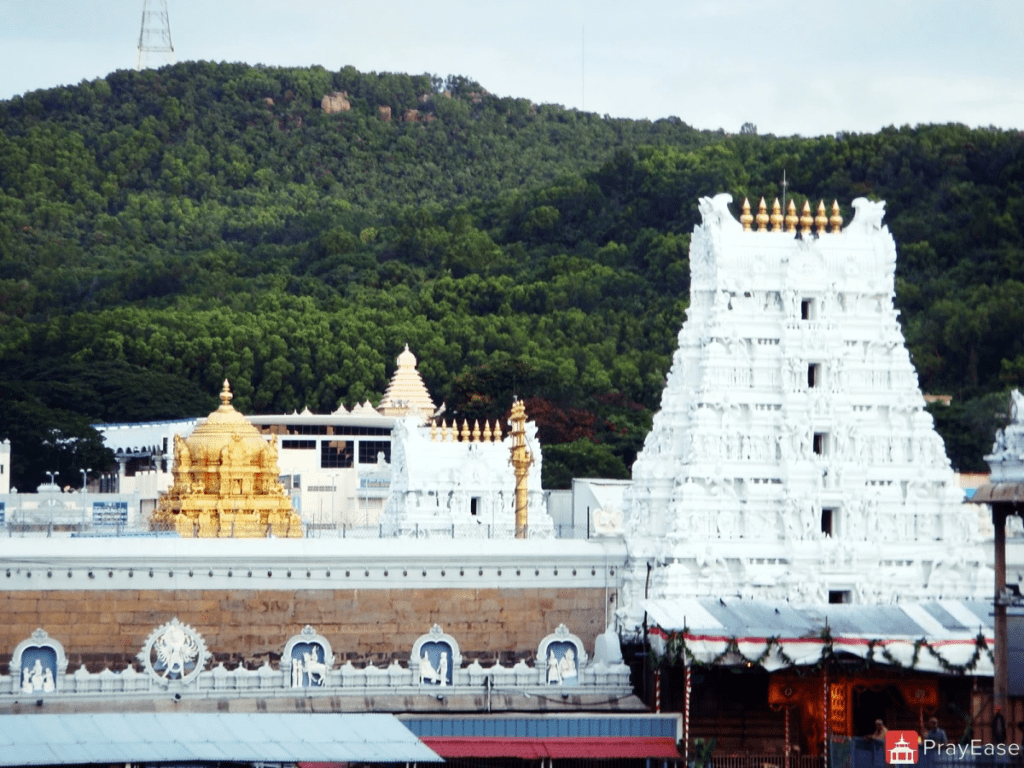
Nearby Attractions of Tirupati Balaji Temple
Tirupati Balaji temple is not only a divine destination but also a tourist attraction. There are many nearby attractions that you can visit while you are in Tirupati, such as:
- Sri Govindaraja Swamy Temple: This is another ancient temple dedicated to Lord Vishnu in Tirupati. It is located about 1 km from Tirupati railway station. It was built by Saint Ramanuja in the 12th century CE. It has a seven-storeyed gopuram and a spacious hall. The main deity is Lord Govindaraja, who is a form of Lord Vishnu lying on Adisesha. The temple also has other deities, such as Lord Parthasarathy, Lord Ranganatha, Goddess Andal, Goddess Lakshmi and Lord Ganesha.
- Sri Kapileswara Swamy Temple: This is a rare temple dedicated to Lord Shiva in Tirupati. It is located about 3 km from Tirupati bus stand. It was built by Pallava kings in the 10th century CE. It has a five-storeyed gopuram and a sacred tank. The main deity is Lord Kapileswara, who is a form of Lord Shiva with a matted hair (jata). The temple also has other deities, such as Goddess Parvati, Goddess Durga, Lord Subramanya, Lord Vinayaka and Lord Nandi.
- Sri Padmavathi Ammavari Temple: This is a famous temple dedicated to Goddess Padmavathi, who is the consort of Lord Venkateshwara. It is located about 5 km from Tirupati bus stand in Tiruchanur. It was built by Chola kings in the 12th century CE. It has a three-storeyed gopuram and a golden chariot. The main deity is Goddess Padmavathi, who is a form of Goddess Lakshmi sitting on a lotus. The temple also has other deities, such as Goddess Saraswati, Goddess Gayatri, Goddess Mahalakshmi and Goddess Bhudevi.
- Sri Kalyana Venkateswara Swamy Temple: This is a beautiful temple dedicated to Lord Venkateshwara in his wedding form. It is located about 12 km from Tirupati bus stand in Srinivasa Mangapuram. It was built by Vijayanagara kings in the 16th century CE. It has a five-storeyed gopuram and a large hall. The main deity is Lord Kalyana Venkateswara, who is a form of Lord Venkateshwara with his consort Padmavathi on his left side. The temple also has other deities, such as Lord Rama, Lord Krishna, Lord Narasimha and Lord Varaha.
Sri Prasanna Venkateswara Swamy Temple: This is a serene temple dedicated to Lord Venkateswara in his smiling form. It is located about 16 km from Tirupati bus stand in Appalayagunta. It was built by Vijayanagara kings in the 17th century CE. It has a three-storeyed gopuram and a peaceful atmosphere. The main deity is Lord Prasanna Venkateswara, who is a form of Lord Venkateshwara with a smiling face and four hands holding chakra, shankha, gada and padma. The temple also has other deities, such as Goddess Padmavathi, Goddess Alarmelmanga, Lord Rama and Lord Hanuman.
These are some of the nearby attractions of Tirupati Balaji temple that you can visit and enjoy. They will enrich your experience and make your trip more memorable.
I hope you enjoyed reading this blog post about Tirupati Balaji temple. It is one of the most sacred and popular temples in India. It attracts millions of pilgrims and tourists every year. It is a place where you can experience the divine grace and blessings of Lord Venkateshwara.
Have you ever visited Tirupati Balaji temple? If yes, how was your experience? If no, would you like to visit it someday? Please share your thoughts with me.
FAQ
When to book 300 rs ticket in Tirumala?
You can book the 300 rupees ticket in Tirumala 28 days in advance or 14 days in advance. The slots are available from 10am to 4pm.
What is the cost of VIP ticket in Tirupati?
The cost of VIP ticket in Tirupati is 1200 rupees. It includes a special entry darshan, a free laddu, and a seat in the VIP waiting area.
What is special about Tirumala Tirupati?
Tirumala Tirupati is one of the most famous Hindu pilgrimage sites in the world. It is home to the Sri Venkateswara Swamy Temple, which is dedicated to Lord Vishnu. The temple is said to be over 1000 years old and is visited by millions of pilgrims every year.
Can we take 300 RS ticket in Tirumala directly?
Yes, you can take the 300 rupees ticket in Tirumala directly. However, it is advisable to book the ticket in advance as the slots tend to fill up quickly.
Can I go to Tirupati now without booking?
Yes, you can go to Tirupati now without booking. However, you will have to wait in line for a long time to get darshan. The queue can be very long, especially during peak season.
How many hours is Tirumala free darshan?
The free darshan in Tirumala is usually around 2-3 hours long. However, the actual time may vary depending on the crowd.
Which month has less crowd in Tirumala?
The months with less crowd in Tirumala are January, February, September, and October. These months are also considered to be the best time to visit Tirumala as the weather is pleasant.
What is the minimum time to climb Tirumala?
The minimum time to climb Tirumala is around 3-4 hours. However, it is advisable to allow more time as the climb can be tiring.
How many can go in VIP Darshan Tirumala?
A maximum of 5 people can go in VIP Darshan Tirumala.
What is L1 L2 L3 darshan in Tirumala?
L1, L2, and L3 darshan are different types of darshan available in Tirumala. L1 is the fastest darshan, followed by L2 and L3. The cost of each darshan also varies.
Who are eligible for VIP darshan in Tirumala?
VIP darshan in Tirumala is available to senior citizens, physically handicapped people, and pregnant women. It is also available to people who have donated a large sum of money to the Tirumala Tirupati Devasthanams (TTD).
What is the maximum time for Tirumala Darshan?
The maximum time for Tirumala Darshan is 6 hours. However, it is advisable to finish your darshan within 3 hours as the queue can be very long.
Can we travel Tirumala at night?
Yes, you can travel Tirumala at night. However, it is advisable to travel during the day as the roads can be slippery at night.
What are the rules for Tirupati Darshan?
The rules for Tirupati Darshan are as follows:
- You must be dressed in appropriate clothing.
- You must remove your shoes before entering the temple.
- You must be respectful of the other pilgrims.
- You must not take any photos or videos inside the temple.
Can we visit Tirumala every month?
Yes, you can visit Tirumala every month. However, it is advisable to avoid visiting during the peak season as the crowd can be very large.
Why is Tirumala closed for 12 years?
Tirumala was closed for 12 years from 1987 to 1999 for renovation. The renovation work was extensive and included the construction of a new temple complex, a new guest house, and a new road to the temple.
Which month is better to visit Tirupati?
The months with less crowd in Tirumala are January, February, September, and October. These months are also considered to be the best time to visit Tirupati as the weather is pleasant.
How many persons can stay in one room in Tirumala?
The number of persons who can stay in one room in Tirumala depends on the size of the room. However, a standard room can accommodate up to 3 persons.
Also Read
Kanchi Kamakshi Temple: Hsitory, How to Reach, Timings
Kamakhya Mandir: A Sacred Site of Shakti Worship and Tantric Practices
